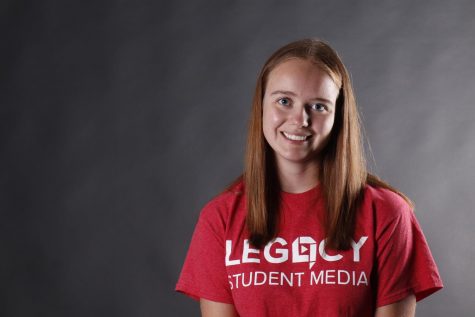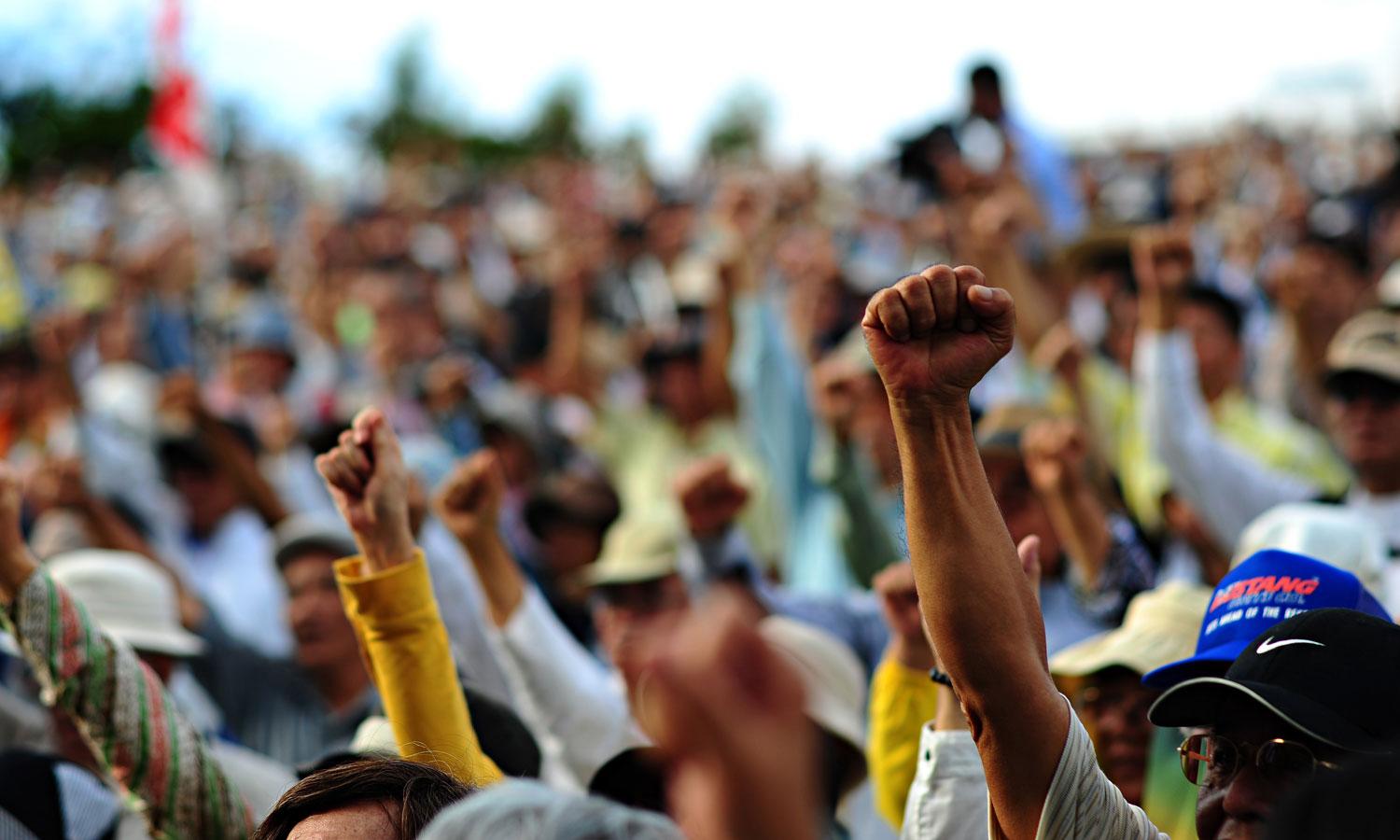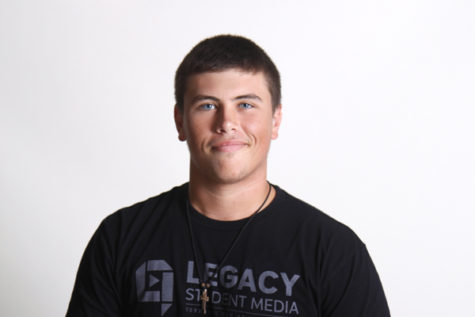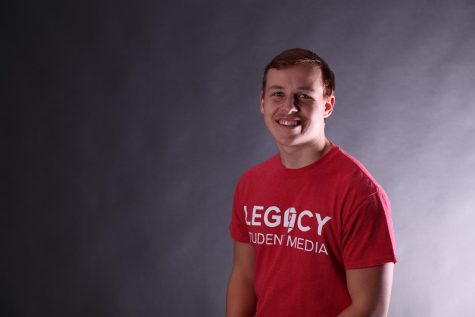Versus: Arming Teachers
August 4, 2018
Eight k-12 schools across the country have experienced shootings this year alone. The time to take actual action in the defense of American students has long passed. Politicians continue to debate the complexities of the issue to find a solution to these tragedies, and political dialogue has turned to arming teachers. But is the answer to gun violence really more guns?
Pro: Armed and Vigilant

Photo courtesy of Wikimedia Commons
Absolutely.
Specifically and strenuously trained educators who care more about the lives of their students than their own, who are willing to face the possibility of putting themselves in harm’s way to protect America’s future, can answer almost any threat. An armed presence on campuses maintains a major deterrent to possible attackers, and many states and school districts have already placed school security marshall programs into law. Coach Rod Nutley agrees weapons on campus are necessary and beneficial, if handled properly.
“I would be for it. The ones, of course, that are trained and understand what they’re doing, but I think there’s certainly a place for an armed presence on the campus,” Coach Nutley said. “Now, we’re fortunate here we’ve got the police officers, but I definitely think that campuses ought to have an armed presence.”
First, examine some of the benefits of arming educators. In this hypothetical, schools do arm teachers: the news will spread, and the armed presence will become a deterrent. Most schools are soft target with minimal protection. If a shooter knew that schools actually gave a firearm to a teacher to use against them, simply knowing that the cost of instituting a massacre had increases could deter them from attacking at all. Schools would have a counter for their attack and soft targets would become brick walls.
“I think it would work, and I’m for it, but the teachers would need more than just CHL training, they need, actually, to be trained to engage active shooters,” Chemistry teacher Mr. John Szoztek said. “A school’s a soft target, so it sets up a real deterrent for a possible shooter to know there’s enough defense inside the school, and to have that number of police officers in the school is just impractical financially. That’s why I think it would work with teachers.”
This process, of course, would not be forced on all teachers. It would be strictly volunteer, but to even qualify for the program, strict training, extensive background checks, physiological analysis, and perhaps even an ethics seminar would be prerequisites, and out of these tests, a few would be chosen. These tests could be administered during the summers, or over breaks. The participants would be required to obtain a Concealed Handgun Licence, but the training would be far more intensive than just a CHL. Combat training, high intensity situational drills, and even some emotional preparation would be necessary for the participants to even come close to graduating. All in all, the teachers carrying guns would be highly qualified, extensively trained, and not lightly chosen for the task of protecting the future.
“I’d want them, obviously, to have the proper firearms training, and then an understanding about rules of engagement,” Nutley said. “So, just that type of training. I wouldn’t want to arm people just to arm people. I want people who know how to use a firearm, and then, of course, when it’s appropriate to use, and so forth.”
The armed teachers would function secretly, akin to air marshals. They would still need to receive every ounce of training, but there’s no attention drawn because the marshall is anonymous. So, if the time ever comes, someone will be ready to respond without the students or anyone else knowing who it is. This would protect the teacher in the program, and would also further deter a possible assailant. Coach Michael Keel remains hesitant about arming teachers, but agrees that mystery would be key.
“I don’t feel comfortable, but I do understand the point of view for smaller schools,” Coach Keel said. “It’s kind of like the marshals on an airplane. You don’t know who it is, but you know that somebody is carrying.”
In 2013, the 83rd Texas Legislature passed a law that permits public school districts to appoint school marshals. It states that the school or institution who selects a candidate must send this person to an 80-hour training course that is conducted by a law enforcement academy. Many schools may have taken advantage of the program secretly, and have exponentially heightened the security of their campuses. Mr. Szostek still believes an armed presence has to appear somewhere.
“As far as all our other security, it’s great, but if someone really wants to get in the school, they’re going to get in the school,” Szoztek said. “At that point, you’re going to have to have someone intervene before the police arrive.”
Con: Armed and Dangerous

Photo courtesy of Wikimedia Commons
In all of these tragedies, one thing stands clear: the answer to guns is not more guns.
Armed teachers will not solve the problem of school shootings. As Assistant Principal Leonard Cousins explains, they would increase danger during regular school days and create more chaos during a shooting situation. Even if the carriers have military experience, guns in a learning environment still pose greater potential harms than benefits.
“In terms in arming them for the metroplex, absolutely not. I think it’s a horrible idea,” Cousins said. “I don’t believe armed teachers are the answer.”
Teachers go through years of college and training with one goal in mind: to learn to teach. Teachers do not attend college to study basics in firearms or principles of shooting. A teacher holds the responsibility of teaching, and the pressure a gun would place on teachers creates a distraction from this. Coach Christopher Hudson agrees guns would ruin his desire to teach.
“If everyone was allowed to carry a gun on campus, I would get out of teaching,” Hudson said. “That’s how I would feel. Because I didn’t sign up for that.”
In 2016, gun accidents were the third highest cause of death in the United States, and one age group stood out as the most vulnerable to these fatal mistakes: teens. School already provokes intense stress, depression and disruptive behavior in adolescents. If one were to add guns to this equation, the campus would become nothing short of a potential disaster site; having guns within reach of students increases the risk of an irreversible accident. Guns would cause problems even before a shooter showed up.
“The problem is, if a fight breaks out, who’s to say that [the students] can’t grab my gun,” Hudson said. “So you’re going to put an environment where kids are already all sorts of mental capacities, and now you’re going to introduce more guns on to that environment — that scares me.”
The layout of schools does not accommodate guns. Gunshots echo in hallways, so in a shooting a teacher would struggle to judge where a threat comes from. If multiple shots go off from different places, police would also struggle to find the true source when they arrive. Police could accidently shoot at an armed teacher, and vice-versa.
“In a chaotic situation like that it’s hard to determine in a school who’s actually firing,” Cousins said. “I think [guns] make the situation worse rather than better.”
Guns do not guarantee safety, even when handled by trained, experienced personnel. For example, Chris Kyle, a Navy Seal veteran and sniper, died in 2013 when a fellow veteran shot him at a shooting range. Despite his exceptional experience in the military, Kyle could not defend himself against a deranged person. Shootings at military bases also happen, despite being full of armed soldiers and experienced veterans. So, if armed military members can’t completely defend against an attacker, then how would a high school teacher?
“I feel like it’s foolish to make you think that a teacher would respond exactly as an armed military,” Hudson said. “If a trained navy seal sniper cannot stop a demented man with an assault rifle, I don’t think that I would have the power in me to stop someone.”
The district must invest in greater safety measures, not in guns. Enhanced drills and increased security provide just as strong of a defense as guns. The school requires lockdown drills to prepare for chaotic scenarios. Lockdown protocols suggest a corner, no lights and a covered window would result as efficient. But it’s not. Drills that mimic reality and require students to place blockage around entrances, for example, would prove more effective. Preparation can overpower chaos.
“I like our safety drills,” Cousins said. “What I would like to do is just make them a little more realistic, and I would like our kiddos to take them a little more seriously. I don’t want them leaving the classroom with a cell phone in their hand, talking on their phone and trying to text. I need [students] to pay attention when we do lockdowns — pay attention because you know we could actually end up doing that for real one day.”
Although the school already takes safety measures, further weapon-less safety measures can make our school more safe. Placing more cameras, ensuring doors remain constantly locked and hiring hall monitors ensure safety without the risk guns bring.
“If you really want to improve these schools here in Mansfield the first thing you have to invest in is security of the building itself,” Cousins said. “And, I believe that the [police] we have here — I absolutely believe they would engage the shooter and I believe they would lay their lives down for our kiddos.”
Students must feel safe — not scared — in schools. Arming any teacher with a gun creates an atmosphere of fear for the students, especially if they don’t know if their teacher has one. Students will feel anxious as they contemplate why the school administration has taken such a drastic measure and as they have the knowledge a teacher should pull out a lethal weapon at them at any moment.
“[Guns are] a weapon of violence and it’s not conducive to learning,” junior Phillip Ipock said. “It would probably scare me.”
Schools must prioritize student safety and educations before anything else. With firearms comes a high risk for deadly accidents, a smaller chance of successful intervention and added stress on teachers and students. This decreased sense of security creates a culture of fear, not of learning.
“The first thing is first: keeping kids safe. You can’t do education until you’re keeping kiddos safe,” Cousins said. “If they feel safe, you’re more likely to be able to reach them.”

Hey, I’m Brinley. I like to watch Gilmore Girls, drink overpriced artesian water, buy things I don’t need, and pretend I have the time and money for...

Hola amigos, my name is Melissa de la cruz Sanchez and I like to make friends. My life motto is “surround yourself with smart people because even if...


